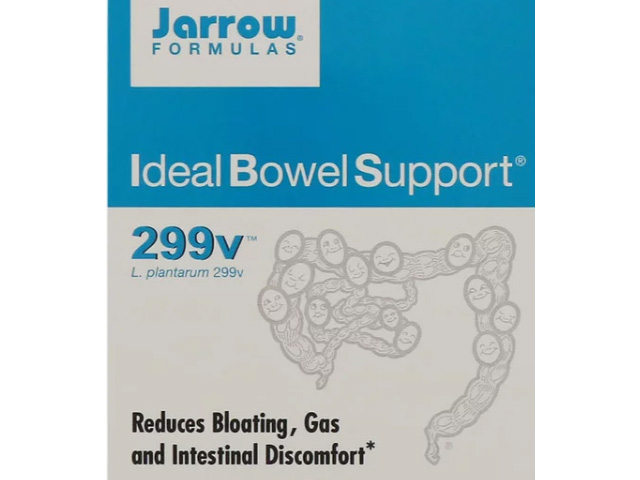Accident coverage covers your pet if he is injured, such as from swallowing something he shouldn’t eat or hitting a hole in the ground at full speed and breaking his leg. Accident-only policies tend to be the ones offered with advertising like, “Cover your dog for less than $10 a month.” They’re inexpensive because insurance is a risk-associated industry and the chances of your dog being hurt in an accident aren’t as high as him becoming sick.
Alternative and/or complementary treatments are included in some plans, but most offer it as a rider. The policies are very specific as to what they will cover. Look for things like hydrotherapy, acupuncture, and chiropractic work, which are rapidly gaining ground as viable rehabilitation and pain-control therapies. Most policies specify exactly what they will cover and who may administer the treatment.
Exclusions will be spelled out, usually in detail, in your policy. It tends to be a very long section. Read it before you sign, and question any vague descriptions. If you can, get your questions answered in writing (one of the great things about email—you can print out the answer and tuck it away with your policy).
Illness coverage takes care of expenses when your dog is sick. That means things like vomiting, heart problems, and tumor removal. Be careful, though, when it comes to cancer; sometimes the limitations are very specific. Read your contract carefully, especially the exclusions page.
Prescription drug coverage seems like it should be covered within the accident and/or illness sections, but it isn’t always. You need to ask. Pets Best had a prescription formulary schedule, just like you see in human health insurance, stating what drugs they will cover. No one can predict what your dog might need—nor what new super drug might be released tomorrow—so, if you can avoid these limitations, all the better. Otherwise, you’ll need to have that list with you when you visit your veterinarian to see if there’s a treatment option covered by the insurance.
Wellness coverage means your dog’s routine care, such as screening blood tests, vaccinations, and tests for internal parasites, such as worms and heartworm. Extraordinary care, such as neutering or dental cleaning, may be covered or may be offered only as a rider on your main policy.
Figure out how much you can spend on your dog’s health insurance.
The first things to consider when choosing which company is right for you and your pets are your out-of-pocket amounts: monthly (or annual) premium payment, deductibles, and copays.
When you got your first car, did you choose the lowest deductible, knowing there was no way you could come up with $1,000 if there was an accident, so that meant your monthly premium was uncomfortably high? Or did you choose a plan with the highest deductible and lowest monthly premium, hoping and praying you wouldn’t have an accident? You have to make a similar choice here: The lower your deductible, the more you’ll pay in a premium. The higher the deductible, the lower the premium.
Deductibles range from $50 to $1,000, with possible custom amounts available (you may have to call and talk with an agent). We were impressed with Embrace’s Healthy Pet Deductible strategy, which reduces your deductible by $50 each year you don’t have a claim. When you do have a claim, the deductible resets to the original amount.
Make sure that you check to see how each company you consider takes off the deductible. Some insurers subtract the deductible before calculating the co-insurance, which lowers your overall out-of-pocket expense. Others first calculate the co-insurance and then subtract the deductible from the remaining amount, which may cause your out-of-pocket total to rise.
Watch out: Some policies have a per-incident deductible instead of an annual deductible, although these plans are increasingly rare. With a per-incident $250 deductible, for example, you have to pay the first $250 of every claim you submit. With an annual $250 deductible, you pay the first $250 for the year’s claims.
Also consider your co-payment options, which are generally 10 to 30 percent of the total bill. Cancer treatments can quickly reach $10,000. A 30-percent copay on that will be more than $3,300 – on top of your deductible. The North American Pet Health Insurance Association (NAPHIA) says 80 percent is the most commonly selected co-insurance, which means the insurer pays 80 percent and you pay 20 percent of every claim.
You still need to be ready to pay up front for veterinary services (or at least, put down some plastic).
Keep in mind that most veterinarians will require you pay for your service up front and be reimbursed by the insurance company. Only a few companies reimburse the vet directly; Trupanion reimburses only enrolled vets directly.
Be aware that it’s not difficult to get a five percent reduction on your pet insurance premium.
Insurers offer this discount for a variety of reasons, including military backgrounds, signing up online, veterinarian-employee discounts, AAA, multiple insured pets, and more. We found Pets Best Pet Insurance, sold by Farmer’s Insurance, offers policyholders a five percent discount by going through Farmers.
Consider your dog’s potential for health problems.
What are the conditions that he’s most likely to develop? For instance, Golden Retrievers have a high incidence of cancer. German Shepherd Dogs are prone to hip dysplasia. Papillons frequently have dental problems. Will these conditions be covered if needed?
Consider what you do with your dog, too. If he’s a sporting dog (agility, herding, flyball, dock diving), for example, look carefully at the coverage for orthopedic injuries.
Look over the pet insurance policy’s exclusions.
If the policy doesn’t spell out the coverage you want, you probably won’t have it. Read carefully to learn exactly what is covered. If you don’t see “hip dysplasia,” it’s probably not covered. In fact, it’s probably listed in the exclusions list. Read every exclusion. If something is excluded that your dog is at high risk for, keep looking.
Accident coverage covers your pet if he is injured, such as from swallowing something he shouldn’t eat or hitting a hole in the ground at full speed and breaking his leg. Accident-only policies tend to be the ones offered with advertising like, “Cover your dog for less than $10 a month.” They’re inexpensive because insurance is a risk-associated industry and the chances of your dog being hurt in an accident aren’t as high as him becoming sick.
Alternative and/or complementary treatments are included in some plans, but most offer it as a rider. The policies are very specific as to what they will cover. Look for things like hydrotherapy, acupuncture, and chiropractic work, which are rapidly gaining ground as viable rehabilitation and pain-control therapies. Most policies specify exactly what they will cover and who may administer the treatment.
Exclusions will be spelled out, usually in detail, in your policy. It tends to be a very long section. Read it before you sign, and question any vague descriptions. If you can, get your questions answered in writing (one of the great things about email—you can print out the answer and tuck it away with your policy).
Illness coverage takes care of expenses when your dog is sick. That means things like vomiting, heart problems, and tumor removal. Be careful, though, when it comes to cancer; sometimes the limitations are very specific. Read your contract carefully, especially the exclusions page.
Prescription drug coverage seems like it should be covered within the accident and/or illness sections, but it isn’t always. You need to ask. Pets Best had a prescription formulary schedule, just like you see in human health insurance, stating what drugs they will cover. No one can predict what your dog might need—nor what new super drug might be released tomorrow—so, if you can avoid these limitations, all the better. Otherwise, you’ll need to have that list with you when you visit your veterinarian to see if there’s a treatment option covered by the insurance.
Wellness coverage means your dog’s routine care, such as screening blood tests, vaccinations, and tests for internal parasites, such as worms and heartworm. Extraordinary care, such as neutering or dental cleaning, may be covered or may be offered only as a rider on your main policy.
Figure out how much you can spend on your dog’s health insurance.
The first things to consider when choosing which company is right for you and your pets are your out-of-pocket amounts: monthly (or annual) premium payment, deductibles, and copays.
When you got your first car, did you choose the lowest deductible, knowing there was no way you could come up with $1,000 if there was an accident, so that meant your monthly premium was uncomfortably high? Or did you choose a plan with the highest deductible and lowest monthly premium, hoping and praying you wouldn’t have an accident? You have to make a similar choice here: The lower your deductible, the more you’ll pay in a premium. The higher the deductible, the lower the premium.
Deductibles range from $50 to $1,000, with possible custom amounts available (you may have to call and talk with an agent). We were impressed with Embrace’s Healthy Pet Deductible strategy, which reduces your deductible by $50 each year you don’t have a claim. When you do have a claim, the deductible resets to the original amount.
Make sure that you check to see how each company you consider takes off the deductible. Some insurers subtract the deductible before calculating the co-insurance, which lowers your overall out-of-pocket expense. Others first calculate the co-insurance and then subtract the deductible from the remaining amount, which may cause your out-of-pocket total to rise.
Watch out: Some policies have a per-incident deductible instead of an annual deductible, although these plans are increasingly rare. With a per-incident $250 deductible, for example, you have to pay the first $250 of every claim you submit. With an annual $250 deductible, you pay the first $250 for the year’s claims.
Also consider your co-payment options, which are generally 10 to 30 percent of the total bill. Cancer treatments can quickly reach $10,000. A 30-percent copay on that will be more than $3,300 – on top of your deductible. The North American Pet Health Insurance Association (NAPHIA) says 80 percent is the most commonly selected co-insurance, which means the insurer pays 80 percent and you pay 20 percent of every claim.
You still need to be ready to pay up front for veterinary services (or at least, put down some plastic).
Keep in mind that most veterinarians will require you pay for your service up front and be reimbursed by the insurance company. Only a few companies reimburse the vet directly; Trupanion reimburses only enrolled vets directly.
Be aware that it’s not difficult to get a five percent reduction on your pet insurance premium.
Insurers offer this discount for a variety of reasons, including military backgrounds, signing up online, veterinarian-employee discounts, AAA, multiple insured pets, and more. We found Pets Best Pet Insurance, sold by Farmer’s Insurance, offers policyholders a five percent discount by going through Farmers.
Consider your dog’s potential for health problems.
What are the conditions that he’s most likely to develop? For instance, Golden Retrievers have a high incidence of cancer. German Shepherd Dogs are prone to hip dysplasia. Papillons frequently have dental problems. Will these conditions be covered if needed?
Consider what you do with your dog, too. If he’s a sporting dog (agility, herding, flyball, dock diving), for example, look carefully at the coverage for orthopedic injuries.
Look over the pet insurance policy’s exclusions.
If the policy doesn’t spell out the coverage you want, you probably won’t have it. Read carefully to learn exactly what is covered. If you don’t see “hip dysplasia,” it’s probably not covered. In fact, it’s probably listed in the exclusions list. Read every exclusion. If something is excluded that your dog is at high risk for, keep looking.

Be very careful when you find the words “medically necessary treatment” in a pet insurance policy.
For example, Embrace defines “medically necessary” as “in our reasonable judgment.” In contrast, Healthy Paws says it covers medically necessary treatment “recommended by your veterinarian.”
In order to appeal denials based on that phrase, you will need to be armed with scientific proof, veterinary literature, and more to show that the claim was medically necessary. If you make a rational appeal, chances are you will win. However, it might take two or three appeals to do so.
Consider the policy payout caps.
Some insurers also have incident caps, annual caps, and even lifetime caps on how much they will pay out. We would avoid plans with these caps because you’re just setting yourself up for heartache. If chemo treatments cost $10,000 (very possible), but your per-incident cap is $5,000, you will have to pay the additional $5,000 yourself. This is huge. Caps are also likely on wellness/preventative coverage, but this seems reasonable. You can pay for additional wellness services.
Understand your financial responsibilities, too.
Most policies do not cover vaccines, flea-protection, heartworm, and other “normal” preventative measures (unless you have a wellness rider). They will state there is no coverage for a disease preventable by vaccine. However, we noted that they do not list what vaccines are normal or required. Rabies is probably a no-brainer and a core (recommended) vaccine, but what if your dog gets canine flu and you skipped the vaccine? Get a list of what’s required.
Make sure routine vet visits are covered in the plan.
A routine veterinarian’s office examination is covered by most policies, but not all. Healthy Paws, for example, does not cover office visits; instead, it pays for things that happen at visits, such as diagnostics and surgery. Keep in mind that office visits can range from $50 to $250 or more for specialists.
If you’re the type who frequently takes your dog to the veterinarian “just in case,” you may want to look for a policy that covers these costs.
Review what dental care is covered for dogs, and what is extra.
Some plans cover routine teeth cleaning by your veterinarian, and some require that you pay for dental insurance in order to cover veterinary cleaning. If your dog develops a secondary ailment due to bad teeth, is it covered?
Check, too, to see if your dog is prone to dental disease. Small dogs are especially prone to tartar formation, gum recession, and eventual loss of teeth. In fact, according to the American Kennel Club, a dog like a Yorkshire Terrier is likely to have lost half of his teeth by the time he is 12 years old. And large dogs may fracture teeth from aggressive chewing.
Find a dog insurance plan with “continual coverage for chronic conditions.”
Without that, you could find yourself out of luck if your dog gets cancer or diabetes. Make sure that the carrier will not cancel your policy because your dog became chronically ill and that the coverage will continue in full.
Know that dog insurance premiums get higher as your dog ages.
Prepare for increases in premiums as the years go on; the older your dog is, the more the insurance company will charge to insure him. Also, be aware that some companies have a cut-off age – an age at which they will no longer cover a dog.
When you sign your dog up, make sure that you answer all the pet insurer’s questions honestly.
Before accepting your dog, all of the insurance companies require a veterinary exam, or, at a minimum, a review of your dog’s veterinary records. If you failed to disclose a previous health problem, your insurer may refuse to pay for current or ongoing treatment for that condition and, in the worst-case scenario, you could be charged with insurance fraud.
Don’t forget the insurance industry is all about risk assessment.
Keep in mind as you make your decisions that insurance is a risk-based industry. The insurance company is betting you won’t need their service, while you’re gambling that you might. It’s up to you to decide how much risk you’re willing to take.
There is a cutoff age to enroll dogs in insurance.
Owner of an older dog? In most cases, you have to enroll your dog in a plan before he reaches a certain age (typically 10 to 14 years). As long as you continue to pay, the companies won’t drop your aging dog. But if your dog is currently too old to be newly enrolled in a reasonably priced policy, is turned down for coverage (considered a poor risk), and/or if you are extremely disciplined about saving money, you might consider just setting aside funds in a savings account just for your pets. Keep in mind that the account has to be maintained at a hefty balance to cover the amount of medical care you would desire for your dog if he or she were insured.
Below are a few leading Pet insurance companies that may help to guide you in selecting your pup’s health insurance:
| INSURANCE | COVERAGES | PRESCRIPTION COVERAGE | DEDUCTIBLES | CO-INSURANCE |
| 24 PetWatch (866) 597-2424 |
Accidents, illness, wellness | Yes | $100 to $1,000 | 20% |
| ANNUAL LIMITS | WAITING PERIOD | REIMBURSMENT METHOD | ENROLLMENT AGE LIMITS | |
| $1,500 to $20,000 | 1 day accidents; 14-30 days illness (2 days on limited illnesses) | Actual cost | 8 weeks to 10 years |
| INSURANCE | COVERAGES | PRESCRIPTION COVERAGE | DEDUCTIBLES | CO-INSURANCE |
| AKC (866) 725-2747 |
Accidents, illness, wellness | Yes | $100 to $1,000 | 20% |
| ANNUAL LIMITS | WAITING PERIOD | REIMBURSMENT METHOD | ENROLLMENT AGE LIMITS | |
| $3,000 to $16,000 | 3 days accidents; 14 days illnesses; 6 months orthopedic |
Usual and customary | 8 weeks to 9 years |
| INSURANCE | COVERAGES | PRESCRIPTION COVERAGE | DEDUCTIBLES | CO-INSURANCE |
| ASPCA (888) 716-1203 |
Accidents, illness, wellness | Yes | $100 to $500 | 10 to 30% |
| ANNUAL LIMITS | WAITING PERIOD | REIMBURSMENT METHOD | ENROLLMENT AGE LIMITS | |
| $5,000 to unlimited | 0 to 14 days | Actual cost | 8 weeks to no limit |
| INSURANCE | COVERAGES | PRESCRIPTION COVERAGE | DEDUCTIBLES | CO-INSURANCE |
| Embrace (800) 511-9172 |
Accidents, illness, wellness | Yes | $200 to $1,000 Offers “Healthy Pet” deductibles!* |
10 to 30% |
| ANNUAL LIMITS | WAITING PERIOD | REIMBURSMENT METHOD | ENROLLMENT AGE LIMITS | |
| $5,000 to $15,000 | 2 to 14 days accidents (varies by state); 14 days illness; 6 months orthopedic |
Actual cost | Up to age 14 |
| INSURANCE | COVERAGES | PRESCRIPTION COVERAGE | DEDUCTIBLES | CO-INSURANCE |
| Figo (844) 493-4130 |
Accidents, illness, wellness | Yes | $50 to $500 | 0 to 30% |
| ANNUAL LIMITS | WAITING PERIOD | REIMBURSMENT METHOD | ENROLLMENT AGE LIMITS | |
| Unlimited** | 5 days accidents; 14 days illnesses; 6 months orthopedic |
Actual cost | 8 weeks to no limit |
** We have highlighted the companies whose default offerings have no caps on annual coverage.
We don’t like consumers to have to guess at the maximum amount they might need to save their dogs’ lives.
| INSURANCE | COVERAGES | PRESCRIPTION COVERAGE | DEDUCTIBLES | CO-INSURANCE |
| Hartville (800) 799-5852 |
Accidents, illness, wellness | Yes | $100 to $500 | 10 to 30% |
| ANNUAL LIMITS | WAITING PERIOD | REIMBURSMENT METHOD | ENROLLMENT AGE LIMITS | |
| $5,000 to unlimited | 0 to 14 days | Usual and customary | 8 weeks to no limit |
| INSURANCE | COVERAGES | PRESCRIPTION COVERAGE | DEDUCTIBLES | CO-INSURANCE |
| Healthy Paws (855) 898-8991 |
Accidents, illness, wellness | Yes | $100 to $500 | 10 to 30% |
| ANNUAL LIMITS | WAITING PERIOD | REIMBURSMENT METHOD | ENROLLMENT AGE LIMITS | |
| Unlimited** | 15 days; 1 year hip dysplasia | Actual cost | 8 weeks to 14 years |
** We have highlighted the companies whose default offerings have no caps on annual coverage.
We don’t like consumers to have to guess at the maximum amount they might need to save their dogs’ lives.
| INSURANCE | COVERAGES | PRESCRIPTION COVERAGE | DEDUCTIBLES | CO-INSURANCE |
| Nationwide (855) 565-1213 WDJ’S TOP PICK! |
Accidents, illness, wellness | Yes | $250 | 10% |
| ANNUAL LIMITS | WAITING PERIOD | REIMBURSMENT METHOD | ENROLLMENT AGE LIMITS | |
| Unlimited** | 14 days | Actual cost | Up to age 10 |
** We have highlighted the companies whose default offerings have no caps on annual coverage.
We don’t like consumers to have to guess at the maximum amount they might need to save their dogs’ lives.
| INSURANCE | COVERAGES | PRESCRIPTION COVERAGE | DEDUCTIBLES | CO-INSURANCE |
| Pet First (855) 270-7387 |
Accidents, illness, wellness | Yes | $50 to $500 | 10 to 30% |
| ANNUAL LIMITS | WAITING PERIOD | REIMBURSMENT METHOD | ENROLLMENT AGE LIMITS | |
| $2,000 to $10,000 | 1 day accidents; 14 days illnesses | Usual and customary | 8 weeks to no limit |
| INSURANCE | COVERAGES | PRESCRIPTION COVERAGE | DEDUCTIBLES | CO-INSURANCE |
| Pet Plan (800) 241-8141 |
Accidents, illness | Yes | $250 to $1,000 | 10 to 30% |
| ANNUAL LIMITS | WAITING PERIOD | REIMBURSMENT METHOD | ENROLLMENT AGE LIMITS | |
| $2,500 to unlimited | 5 days accidents; 15 days illnesses | Usual and customary | 6 weeks and up |
| INSURANCE | COVERAGES | PRESCRIPTION COVERAGE | DEDUCTIBLES | CO-INSURANCE |
| Pet Premium (800) 935-7280 |
Accidents, illness, wellness | Yes | $100 to $500 | 10 to 30% |
| ANNUAL LIMITS | WAITING PERIOD | REIMBURSMENT METHOD | ENROLLMENT AGE LIMITS | |
| $2,500 to unlimited | 14 days | Actual cost | 8 weeks to 12 years |
| INSURANCE | COVERAGES | PRESCRIPTION COVERAGE | DEDUCTIBLES | CO-INSURANCE |
| Pets Best (877) 738-7237 |
Accidents, illness | Optional | $50 to $1,000 | 10 to 30% |
| ANNUAL LIMITS | WAITING PERIOD | REIMBURSMENT METHOD | ENROLLMENT AGE LIMITS | |
| $2,500 to unlimited | 3 days accidents; 14 days illnesses; 6 months orthopedic |
Actual cost | 7 weeks to no limit |
| INSURANCE | COVERAGES | PRESCRIPTION COVERAGE | DEDUCTIBLES | CO-INSURANCE |
| Premier (877) 774-4671 |
Accidents, illness, wellness | Yes | $50 to $1,000 | 10 to 30% |
| ANNUAL LIMITS | WAITING PERIOD | REIMBURSMENT METHOD | ENROLLMENT AGE LIMITS | |
| $2,500 to unlimited | 3 days accidents; 14 days illnesses; 6 months orthopedic |
Actual cost | Not listed |
| INSURANCE | COVERAGES | PRESCRIPTION COVERAGE | DEDUCTIBLES | CO-INSURANCE |
| Trupanion (855) 210-8749 |
Accidents, illness | Yes | $0 to $1,000 | 10% |
| ANNUAL LIMITS | WAITING PERIOD | REIMBURSMENT METHOD | ENROLLMENT AGE LIMITS | |
| Unlimited** | 5 days accidents; 30 days illnesses | Actual cost | 8 weeks to 14 years |
Options That Are Not Really Insurance
There are companies like Pet Assure that offer “discount cards” for veterinary services for a low monthly fee. They offer a 25 percent discount if you present the card at “participating” veterinary clinics. However, this is not insurance. You pay the company for negotiating with veterinarians to accept the card. For a lot of the clinics, you may be able to negotiate this rate on your own, especially if you are a frequent customer.
Banfield Pet Hospital offers another option to insurance – a wellness program with various levels of service provided for a flat fee. You select a level of wellness/preventative care that you anticipate needing for a set monthly fee. This provides an incentive to bring your dog into a Banfield clinic for regular wellness exams; the company apparently banks on the likelihood that if your dog does become sick, you will bring him back to Banfield for treatment.











